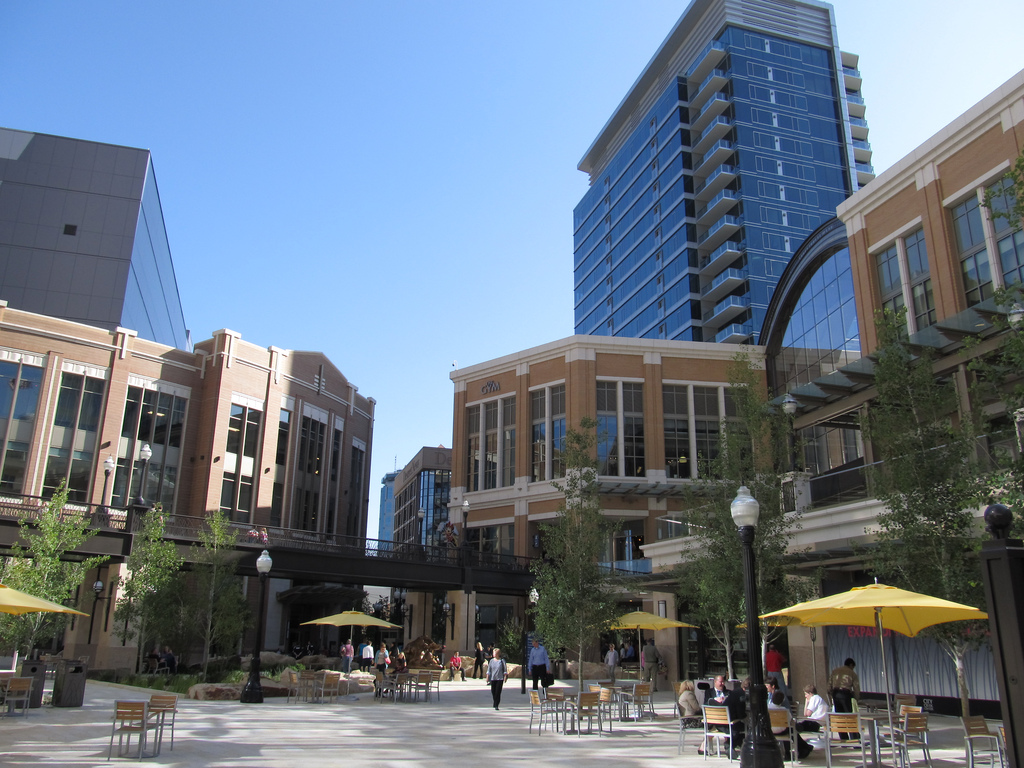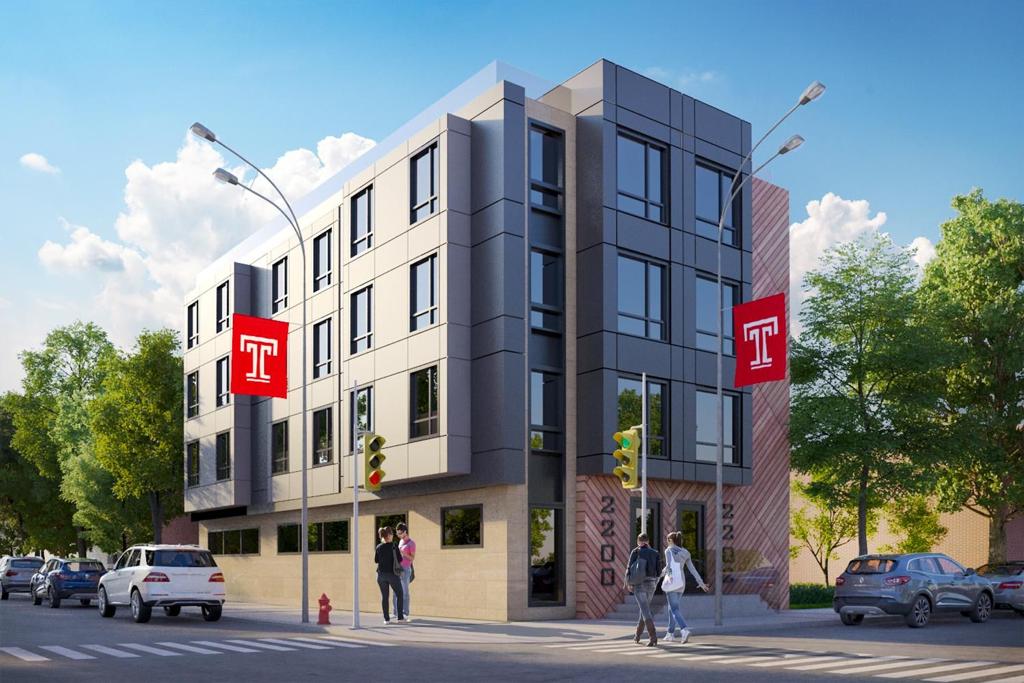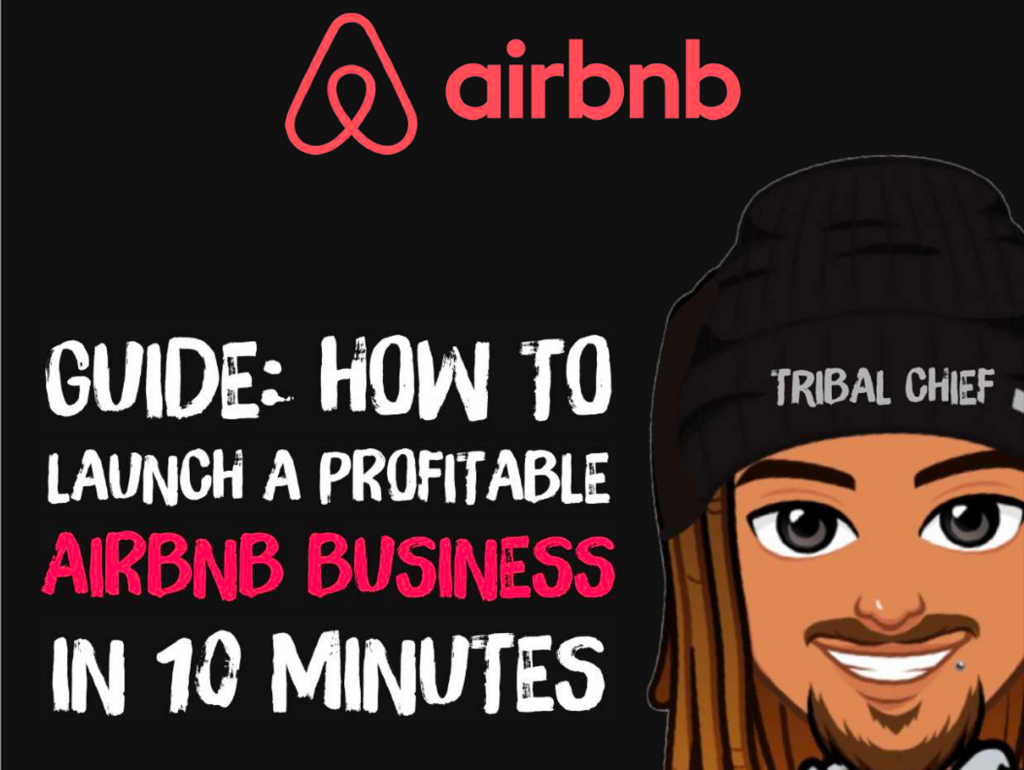Real Estate Investing
Commercial Real Estate: Property Types And Classes
Published
4 years agoon

Before you start investing in commercial real estate, regardless if it’s via online crowdfunding or through a syndication, you want to know what sort of investment you are getting into.
In general, crowdfunding and syndications both invest in commercial real estate. Single-family properties are too cheap for developers to raise capital on. There is a fixed cost of raising capital. So, developers focus on $1m+ properties.
And usually those are commercial real estate projects.
Since commercial real estate is new to most investors, we’re going to cover the different property types within commercial real estate, as well as the different classes of property and neighborhoods.
Asset Class vs Property Type vs Property Class
An asset class is a group of investments that have similar characteristics and behave similarly in the marketplace.
Equities (stocks), fixed income (bonds), and cash equivalents (money market) are the 3 traditional asset classes. Additionally, there are 2 alternative asset classes that are extremely common as well – real estate and commodities.
There are a whole host of alternative asset classes which professionals may agree or disagree on them, such as valuable art, numismatics, or other collectibles. Increasingly many are looking at crytpo currencies as an alternative asset class.
Each asset class can further be broken down. For example, there are 11 sectors for stocks (healthcare, industrials, technology, etc).
A lot of people will ask about asset classes in real estate. What they actually mean to ask is about property types within the asset class of real estate. There are no asset classes within real estate because real estate is an asset class.
Property types are what the real estate asset class is broken down into. Just like stocks have 11 sectors, real estate has a variety of property types from office to multifamily.
Real estate does have a “class” rating system as well, which may be part of the reason why people confuse the terminology.
Property classes in real estate are referring to a rating system we use in the real estate industry to help us categorize neighborhoods and property types. This is generally on an A to D rating scale where A is the nicest properties and D is the oldest and most run down.
Real Estate Property Types

The asset class is an overarching and very broad type of investment. Within real estate, there are 4 primary types of property which include:
- Residential
- Commercial Real Estate (CRE)
- Industrial
- Land
Each one of these can be further broken down. For example, farming and resource extraction (mining and oil) are uses for raw land.
We’re going to focus on commercial real estate because that is what most investors are buying when they want to buy income producing property.
Types of Commercial Real Estate
There is almost an unlimited number of types of commercial real estate, but here are the most common ones you’ll see.
Multifamily
Multifamily is a type of commercial real estate because the owners buy it to produce income, not to live in.
Multifamily is anything that is 5 units and above (in the United States).
There’s really no reason for it except that the primary mortgage lenders Fannie Mae and Freddie Mac will back personal/residential mortgages on any owner occupied property 1-4 units, but not 5 and above.
So, a homeowner can get a traditional mortgage on a 4 family, not on a 5 family.
4 family properties are technically multifamily. But, they are excluded because they are bought by typical homeowners. Commercial multifamily property is exclusively 5 units and above.
Garden style, mid-rise, and high-rise buildings are 3 sub-categories of multifamily to be aware of.
Retail
Retail is the subcategory of commercial real estate that includes all shopping. This includes everything from a building with a single retail tenant in it (such as a fast food restaurant), all the way up through shopping plazas or even shopping malls.
It is a really complicated space because there are a variety of lease terms that can directly impact the value of the asset. For example, a single tenanted building with a lease that is about to expire is worth far less than the same building with a new 10-year lease.
Additionally, there are different types of malls, shopping centers, outlets, and more that complicate the space.
Regardless of how they are broken down, they are all considered retail.
Office
Similar to retail, these can be multi-tenanted or single-tenanted. But, unlike retail, these can range from giant skyscrapers to small office condo developments.
Self Storage
Self-Storage is relatively new to the list and is not included in most other breakdowns of commercial real estate. But, it should be.
Self-storage is one of the fastest growing and most stable CRE investments available. Supply simply cannot keep up with demand in many markets, and available spaces are being leased up at unbelievable rates.
Hotel
These are properties that are owned and operated for the purpose of very short term rentals. Can also include motels.
Mobile Home Parks
Mobile Home Parks are a huge sub-category. It’s often overlooked or counted as a sub-category to multifamily, but that’s not accurate.
Mobile home parks were very popular in the 70’s and earlier, but few new MHPs have been built in several decades. As such, occupancy is high and stable.
On the other hand, infrastructure is aging and investments in underground water/sewer, roads, and electrical can be very costly.
Special Purpose
This just captures all the other unique types of commercial real estate out there such as amusement parks, bowling alleys, and more.
Classes of Property

In residential and multifamily, the property/neighborhood class is a rating from A to D. It describes the overall age and quality of both the neighborhood and the individual property. For example, you might hear that this is a C class property in a B class neighborhood.
Multifamily is anything that is 5 units and above (in the United States).
There’s really no reason for it except that the primary mortgage lenders Fannie Mae and Freddie Mac will back personal/residential mortgages on any owner occupied property 1-4 units, but not 5 and above.
So, a homeowner can get a traditional mortgage on a 4 family, not on a 5 family.
4 family properties are technically multifamily. But, they are excluded because they are bought by typical homeowners. Commercial multifamily property is exclusively 5 units and above.
Garden style, mid-rise, and high-rise buildings are 3 sub-categories of multifamily to be aware of.
Retail
Retail is the subcategory of commercial real estate that includes all shopping. This includes everything from a building with a single retail tenant in it (such as a fast food restaurant), all the way up through shopping plazas or even shopping malls.
It is a really complicated space because there are a variety of lease terms that can directly impact the value of the asset. For example, a single tenanted building with a lease that is about to expire is worth far less than the same building with a new 10-year lease.
Additionally, there are different types of malls, shopping centers, outlets, and more that complicate the space.
Regardless of how they are broken down, they are all considered retail.
Office
Similar to retail, these can be multi-tenanted or single-tenanted. But, unlike retail, these can range from giant skyscrapers to small office condo developments.
Self Storage
Self-Storage is relatively new to the list and is not included in most other breakdowns of commercial real estate. But, it should be.
Self-storage is one of the fastest growing and most stable CRE investments available. Supply simply cannot keep up with demand in many markets, and available spaces are being leased up at unbelievable rates.
Hotel
These are properties that are owned and operated for the purpose of very short term rentals. Can also include motels.
Mobile Home Parks
Mobile Home Parks are a huge sub-category. It’s often overlooked or counted as a sub-category to multifamily, but that’s not accurate.
Mobile home parks were very popular in the 70’s and earlier, but few new MHPs have been built in several decades. As such, occupancy is high and stable.
On the other hand, infrastructure is aging and investments in underground water/sewer, roads, and electrical can be very costly.
Special Purpose
This just captures all the other unique types of commercial real estate out there such as amusement parks, bowling alleys, and more.
Classes of Property
In residential and multifamily, the property/neighborhood class is a rating from A to D. It describes the overall age and quality of both the neighborhood and the individual property. For example, you might hear that this is a C class property in a B class neighborhood.
This article originally appeared on IdealREI. Follow them on Facebook, Instagram and Twitter.
Real Estate Investing
5 Recession-Proof Investments for Your Portfolio
Published
12 months agoon
May 3, 2023
By Sheryl Chapman
As we all know, the economy can be unpredictable at times. Recession is a common phenomenon that can affect the investments in your portfolio.
But don’t worry, there are some sectors that are likely to perform well—even during a recession. Here are five recession-proof investments that you can consider adding to your portfolio.
(Editor’s note***********:************ If you wanna learn how to start investing for retirement, check out the free lessons inside the academy! 📺)*
1. Consumer staples
Consumer staples are products that are essential to our daily lives, such as food, household goods, and personal care items.
These products are in constant demand, regardless of the economic climate. Companies that produce these items, such as Procter & Gamble and Coca-Cola, are considered recession-proof investments.
These companies have a stable revenue stream that can weather economic downturns.
2. Utilities
Utilities are another recession-resistant investment. People need electricity, gas, and water, regardless of the state of the economy.
Utility companies, such as Duke Energy and American Electric Power, have a steady stream of revenue and provide investors with a reliable source of income.
3. Healthcare
The healthcare industry is recession-proof because it provides essential services that people cannot do without. Companies that provide healthcare services or products, such as Johnson & Johnson and UnitedHealth Group, are likely to remain profitable during a recession.
4. Gold
Gold is a safe-haven investment that many investors turn to during times of economic uncertainty. Gold prices tend to rise during recessions because it is seen as a store of value. Investors can buy physical gold, gold ETFs, or invest in gold mining stocks.
GUIDE: 3 Ways To Invest In Gold In 3 Minutes Or Less 🔑📲
5. Treasury bonds
Treasury bonds are considered to be one of the safest investments during a recession.
These bonds are issued by the US government and are backed by the full faith and credit of the government. Treasury bonds provide a fixed income and are considered to be a low-risk investment.
In conclusion, these five investments are considered to be recession-proof because they provide essential products or services that people cannot do without.
Adding these investments to your portfolio can provide stability during times of economic uncertainty.
Real Estate Investing
5 Tips To Pricing Your Airbnb Listing For Maximum Profits
Published
12 months agoon
May 2, 2023
Airbnb has revolutionized the travel industry by providing an affordable and unique way for travelers to experience different destinations.
With over 7 million listings worldwide, it’s safe to say that Airbnb has become one of the most popular ways for travelers to find lodging.
However, as a host, one of the most challenging decisions you’ll face is determining the right price for your listing.
Pricing your Airbnb listing correctly is critical to your success as a host, as it can make or break your profitability.
Here are some tips to help you price your Airbnb listing for maximum profit:
Know Your Market
Before you set your price, it’s essential to research the market in your area. Look at other listings in your neighborhood, paying attention to the size of the property, amenities, and location. Check the availability of your competitors and the average price they charge. This information will help you determine your pricing strategy and ensure that your listing is competitive.
Consider Seasonal Demand
Seasonal demand plays a significant role in the pricing of your Airbnb listing. During peak seasons, such as holidays, festivals, and major events, you can charge higher rates. Conversely, during low seasons, you’ll need to lower your prices to attract guests. Keep track of events happening in your area and adjust your prices accordingly.
Offer Discounts
Offering discounts is an effective way to attract guests and increase your occupancy rate. Consider offering discounts for extended stays, early bookings, or last-minute reservations. You can also offer discounts to guests who leave a positive review or refer new guests to your listing.
Calculate Your Costs
To ensure that your pricing strategy is profitable, you need to calculate your costs. Take into account expenses such as cleaning fees, utilities, maintenance, and taxes. Factor in your time and effort as well. Your goal is to set a price that will cover all your costs while still allowing you to make a profit.
Be Flexible
Finally, be flexible with your pricing strategy. Test different prices and see how they affect your occupancy rate and profitability. Monitor your competition regularly and adjust your prices accordingly. Remember that the market is constantly changing, and your pricing strategy needs to adapt to stay competitive.
In conclusion, pricing your Airbnb listing for maximum profit is a crucial aspect of your success as a host. By researching your market, considering seasonal demand, offering discounts, calculating your costs, and being flexible, you can set the right price for your listing and maximize your profitability.
Happy hosting!
Real Estate Investing
3 Ways To Turn Your Room Into Money-Making Airbnb Business
Published
12 months agoon
April 28, 2023
Are you looking for a way to earn some extra cash? Have you considered turning your spare room into a money-making Airbnb business?
With just a few simple steps, you can create a cozy and welcoming space that guests will love. In this article, we’ll explore three ways to get started on your journey to becoming an Airbnb host.
Here are three steps to get started TODAY.☕️🏠💰
1. Prepare Your Space: Before you start accepting guests, you need to make sure your space is guest-ready. This means cleaning thoroughly, providing fresh linens and towels, and decluttering the space.
PRO TIP: You may also want to consider adding personal touches like fresh flowers or a welcome basket to make guests feel at home.
Here’s a growth hack from the Airbnb lecture inside the academy: “A nice personal touch like a letter or a note can go a LONG way.”
Oh, by the way…he makes $500K/month from his Airbnb side hustle. (Watch it for free here.)
2. Create Your Listing: Once your space is ready, it’s time to create your Airbnb listing. (Here’s a guide on how to do this in 10 minutes. AND it pays you $25.)
This is where you’ll showcase your space and attract potential guests. Make sure to include high-quality photos, a detailed description of your space and amenities, and accurate pricing information.
You may also want to consider offering discounts for longer stays or adding extra perks like free breakfast or use of a pool.
3. Manage Your Guests: Once your listing is live, you’ll start receiving inquiries and bookings. It’s important to communicate promptly and clearly with guests to ensure a positive experience for everyone.
Make sure to answer any questions they may have and provide detailed check-in instructions.
During their stay, make sure to be available to address any issues that may arise and provide recommendations for local attractions and restaurants.
With these steps, you can turn your spare room into a profitable Airbnb listing and start earning extra income. Happy hosting!
Editor’s Note: If you want a step-by-step coaching session on how to set up your own $100K+ Airbnb side hustle, you can do so here. $49. Limited time only.
Top 5 Best Investment Strategies To Survive A Recession
The Top 10 Investment Opportunities To Capitalize On During A Recession
3 Gold Mining Stocks To Buy Today 📲
Ad 1
Trending

You’ve reached your free article limit.
Continue reading by subscribing.
Already a subsciber? Login >
Go back to Homepage >




